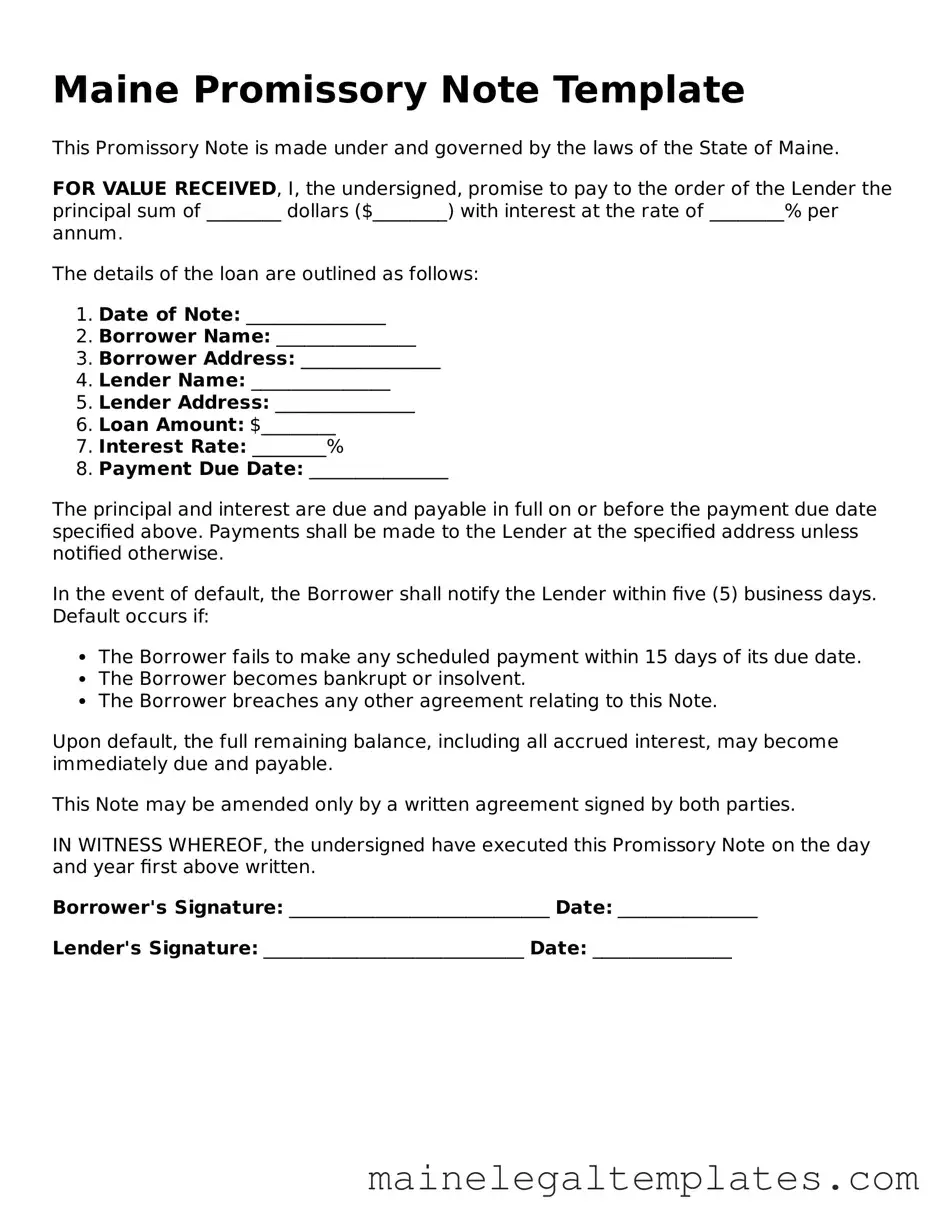Maine Promissory Note Template
This Promissory Note is made under and governed by the laws of the State of Maine.
FOR VALUE RECEIVED, I, the undersigned, promise to pay to the order of the Lender the principal sum of ________ dollars ($________) with interest at the rate of ________% per annum.
The details of the loan are outlined as follows:
- Date of Note: _______________
- Borrower Name: _______________
- Borrower Address: _______________
- Lender Name: _______________
- Lender Address: _______________
- Loan Amount: $________
- Interest Rate: ________%
- Payment Due Date: _______________
The principal and interest are due and payable in full on or before the payment due date specified above. Payments shall be made to the Lender at the specified address unless notified otherwise.
In the event of default, the Borrower shall notify the Lender within five (5) business days. Default occurs if:
- The Borrower fails to make any scheduled payment within 15 days of its due date.
- The Borrower becomes bankrupt or insolvent.
- The Borrower breaches any other agreement relating to this Note.
Upon default, the full remaining balance, including all accrued interest, may become immediately due and payable.
This Note may be amended only by a written agreement signed by both parties.
IN WITNESS WHEREOF, the undersigned have executed this Promissory Note on the day and year first above written.
Borrower's Signature: ____________________________ Date: _______________
Lender's Signature: ____________________________ Date: _______________
